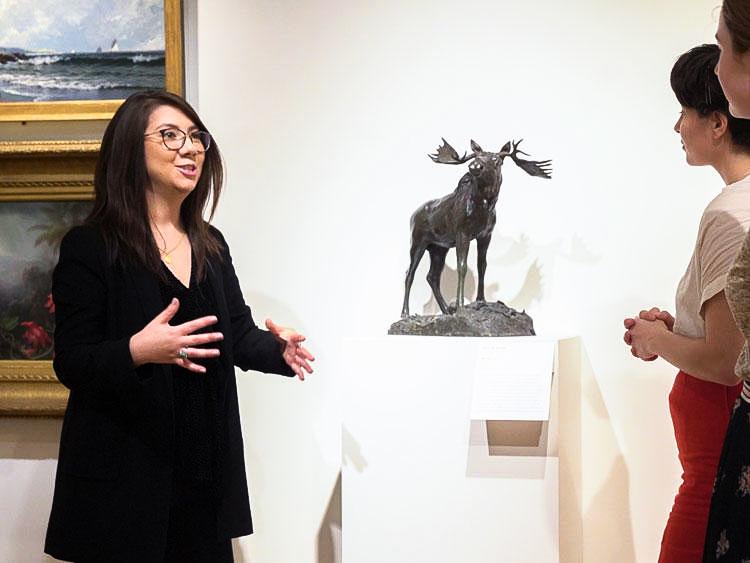photo by Nadia Crawford
Museums of all subject matter exist to document history in a more real or physical way; they have the ability to spread awareness and provide education to their patrons, but with the continued efforts of the current Civil Rights movement and the ongoing issue of the global pandemic, museums have had to adjust to health protocols and do some reconsidering on how they are portraying the historical artifacts that they display. To gain insight on this, I asked art and art history professor Dr. Yinshi Lerman-Tan about her museum studies course and how she is addressing current world issues inside of the classroom.
What is the basic premise of the museum studies course?
We might take the presence of museums in society for granted, but this class asks: where did museums come from? How have they developed the conventions that we see and experience today? How do they shape American identities? Each week, we examine case studies in the history of American museums—from early museums like the Peale and Barnum museums to landmark exhibitions of the modern period and even the rise of the “Instagram museum.”
I see museum studies as having three prongs: historical, theoretical and practical. On the practical side, we have regular visits from museum professionals, including my colleagues from the San Antonio Museum of Art, the Archives of American Art and a former curator from the California Historical Society. They talk about their work and how they entered the field. Many of my students are interested in museum careers, and through class projects, they are developing skills in areas like acquisitions and curation.
How are you and your students addressing COVID-19 in the context of the class?
One impact is that museums are now producing significant digital and online programming, similar to the way that teaching has moved more on to online platforms. We have also talked about the role of museums as being of particular importance to the communities they serve during times of crisis.
How are you and your students addressing topics of race and civil rights movements in the classroom?
American museums are currently at a flashpoint in examining their relevance and meaning and — taking a cue from our current civil rights movement, Black Lives Matter — thinking about how they can be more equitable institutions. In class, we are tracking current developments in the art world — including the Met’s hiring of the first full-time curator of Native American art, the delay of the Philip Guston retrospective and the removal of the Theodore Roosevelt statue at the Natural History Museum in New York. We study these events in historical context, alongside topics like the origins of natural history museums and modern art museums, the historical relationship between race and display and exhibitions subject to controversy in the twentieth century.
Historically, how has art depicted topics of race? What is or has been changing in terms of this?
In our seminar, we have studied art that deals with racial justice, inequity and society, both in our contemporary moment and historically. For instance, we recently discussed the work of the Los Angeles-based performance artist Rafa Esparza. He makes and installs traditional adobe bricks in gallery and museum spaces—which he describes as “browning the white cube.” We have discussed artists whose work deals explicitly with the history of racism, including Titus Kaphar and San Antonio-born artist Vincent Valdez. We discussed Amy Sherald’s poignant portrait of Breonna Taylor for the cover of Vanity Fair. As with many things, I think we can look to artists from the past and those working now to help us work through difficult topics, like violence and legacies of racism in America.
What would you say is important for your students, as well as the rest of the student body, to keep in mind with what we are experiencing?
Trinity students are experiencing college at a challenging and historic time in our country. I would say that in this time, looking and experiencing any kind of art that you are able to access—film, fine art, novels, music, comedy—can be a great resource to nourish yourselves. This is not to say that art is simply therapeutic, but rather, it captures the complexity of experience and can help remind us of who we are as individuals and as a community.







